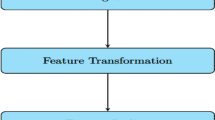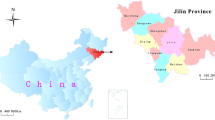Abstract
The current model design for environmental governance cost prediction is too simple, it is difficult to obtain the ideal prediction accuracy, and it has the disadvantages of slow convergence. Based on this, this study combines the particle swarm optimization algorithm to improve the support vector machine and proposes a machine learning method based on particle swarm optimization support vector machine. Through the analysis of the machine learning process and the actual project of environmental governance, this study constructs a scientific predictive index system, proposes a predictive model based on particle swarm optimization parameters, and uses system clustering analysis to classify similar sample data. At the same time, this study compares the performance of BP neural network model-based prediction model, LSSVM model-based prediction model, and PSO-LSSVM model-based prediction model. The research indicates that the prediction model based on PSO optimization LSSVM has a good guiding significance for the cost prediction of environmental governance engineering, and is more suitable for the prediction of the pre-cost of environmental governance.





Similar content being viewed by others
References
Robert C (2014) Machine learning, a probabilistic perspective. Chance 27(2):62–63
Chen T, Du Z, Sun N et al (2014) DianNao: a small-footprint high-throughput accelerator for ubiquitous machine-learning. Acm Sigplan Notices 49(4):269–284
Nickel M, Murphy K, Tresp V et al (2015) A review of relational machine learning for knowledge graphs. Proc IEEE 104(1):11–33
Buczak AL, Guven E (2017) A survey of data mining and machine learning methods for cyber security intrusion detection. IEEE Commun Surv Tutor 18(2):1153–1176
Pillonetto G, Dinuzzo F, Chen T et al (2014) Kernel methods in system identification, machine learning and function estimation: a survey ☆. Automatica 50(3):657–682
Libbrecht MW, Noble WS (2016) Machine learning applications in genetics and genomics. Nat Rev Genet 16(6):321–332
Vanschoren J, Rijn JNV, Bischl B et al (2014) OpenML: networked science in machine learning. ACM SIGKDD Explor Newsl 15(2):49–60
Stratigopoulos HG, Makris Y (2015) Error moderation in low-cost machine-learning-based analog/RF testing. IEEE Trans Comput Aided Des Integr Circuits Syst 27(2):339–351
Sidorov G, Velasquez F, Stamatatos E et al (2014) Syntactic N-grams as machine learning features for natural language processing. Expert Syst Appl 41(3):853–860
Giusti A, Guzzi J, Dan CC et al (2017) A machine learning approach to visual perception of forest trails for mobile robots. IEEE Robotics Autom Lett 1(2):661–667
Hasan S, Shamsuddin SM, Lopes N (2014) Machine learning big data framework and analytics for big data problems. Int J Adv Soft Comput Appl 6(2):1–14
Xing EP, Ho Q, Dai W et al (2015) Petuum: a new platform for distributed machine learning on big data. IEEE Trans Big Data 1(2):49–67
Shan S (2014) Big data classification: problems and challenges in network intrusion prediction with machine learning. Acm Sigmetr Perform Eval Rev 41(4):70–73
Obermeyer Z, Emanuel EJ (2016) Predicting the future—big data, machine learning, and clinical medicine. N Engl J Med 375(13):1216–1219
Landset S, Khoshgoftaar TM, Richter AN et al (2015) A survey of open source tools for machine learning with big data in the Hadoop ecosystem. J Big Data 2(1):24
Acknowledgements
This research is supported by the National Natural Science Foundation of China (No. 71773032).
Author information
Authors and Affiliations
Corresponding author
Rights and permissions
About this article
Cite this article
Ai, D., Yang, J. A machine learning approach for cost prediction analysis in environmental governance engineering. Neural Comput & Applic 31, 8195–8203 (2019). https://doi.org/10.1007/s00521-018-3860-z
Received:
Accepted:
Published:
Issue Date:
DOI: https://doi.org/10.1007/s00521-018-3860-z




